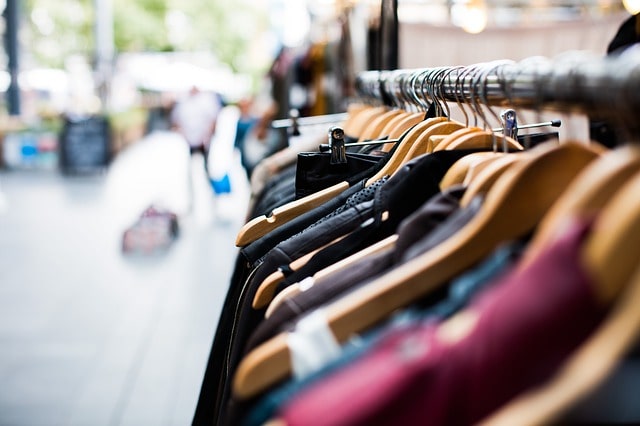Business
Blockchain for the Fashion and Luxury Industry

The fashion and luxury industry has become infamous for its waste and inhumane working conditions. Blockchain-based tracking solutions can empower consumers by providing supply chain insights.
There is a lot wrong with today’s fashion industry. It’s the second-largest polluter in the world after the oil industry. Here are some facts:
Water pollution: In many of the countries in which garments are produced, untreated toxic wastewaters from textile factories are dumped directly into the rivers.
Emissions: The apparel industry accounts for 10% of global carbon emissions.
Waste: Every year, fashion manufacturing produces 92 million tons of solid waste, most of which goes to landfills or up in smoke.
Working Conditions: Many fashion brands barely even pay their workers a minimum wage. Garment workers are often forced to work 14 to 16 hours a day, 7 days a week. Employees often work with no ventilation, breathing in toxic substances, inhaling fiber dust, or blasted sand in unsafe buildings.
Long story short: The $800 billion global apparel industry, with its ever-faster fashion, has become infamous for its waste and squander.
Blockchain offers solutions: traceability and transparency
While the above issues are well-known facts, consumers do not have sufficient insights into manufacturers’ supply chains to be able to understand how fashion brands actually produce their clothing. Labels of fair trade and businesses’ self-declared corporate and social responsibility (SCR) goals are mostly marketing stunts at best.
With blockchain, there is a solution at hand that could provide traceability and transparency into the fashion industry’s supply chains. Blockchain solutions can create a physical-to-digital link between goods and their (digital) identities. A cryptographic seal or serial number acts as the physical identifier, linking back to the product’s “digital twin.”
This digital identity is what brands are betting on. It’s on the micro-scale that experts are expecting blockchain to make a difference. That’s where stores play an important role, particularly in the luxury universe. They act as a seal of reference, committing themselves to sell a product linked to a digital identity, fostering trust from the customer’s side, and improving the customer-brand relationship.
Because a product has a blockchain-based digital identity, it also comes with the reassurance factor that it’s not a fraudulent item. The shopping experience changes as the brand’s image is preserved, and the buyer avoids disappointment.
The second-hand market of luxury items – proof of authentification
Beyond fraud-fighting, an identification via blockchain allows for a resignificance of the second-hand market of luxury items. Having seen an increase in popularity, pre-owned items can benefit from an authentification, a proof of origin, thanks to blockchain.

Think of an ID card that’s impossible to falsify. Blockchain technology makes that possible and enables the transfer of this ID to the product’s new owner. It also speeds up the process of verification that precedes the purchase of luxury items.
On the one hand, the buyer can verify the item’s journey since the initial purchase, and on the other hand, brands can ensure the value of their products doesn’t rapidly degrade in the second-hand market. It also enables brands to detain a detailed “cartography” of their clients thanks to the digital certificate of authenticity – which they’re the only ones able to emit.
Some fashion companies already use blockchain technology today
LVMH announced in May of this year that they’ve partnered with Microsoft and ConsenSys to launch a blockchain-based platform called Aura. The objective is to ensure the traceability and authenticity of luxury products. Initially, the technology will be used by Louis Vuitton and by Christian Dior. It’ll enable proof of origin, lifecycle tracking, protecting intellectual property and fighting against fraud.
Somish Blockchain Labs recently partnered with Circular Apparel Innovation Factory (CAIF) to come up with a blockchain solution to enable supply chain networks to implement CSR goals, discover cost-saving levers, ensure contractual conditions are met, and stakeholder incentives aligned.
Arianee is a protocol for product certification and communication between an item’s brand and owner. Each piece will receive a blockchain-based certificate, enabling consumers to track the product’s authenticity.
“Arianee’s protocol is a set of rules and guidelines for product certification and communication between the item’s brand and owner.”
Hugo Boss is exploring a blockchain use case on tracking goods in the supply chain, that shows in a transparent way the ownership and the transfer of ownership of goods among peers in the same network.
Today, most of these solutions focus on counterfeit prevention and proof of ownership, which is particularly critical in the luxury fashion industry. However, the more blockchain is finding its way into the fashion industry, the more it will also be used to trace and track supply chains to identify unethical manufacturing practices.
The consumer mindset is already shifting towards more ethical supply chains. Once consumers have the tools to supervise fashion brands and punish them economically by non-consumption, the game will start to change.



